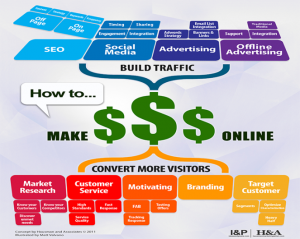It’s that time of the year again. While many are looking forward to the holiday season and counting down to the end of the year, businesses are engaged in the planning process for next year. No matter the size of your business, now is a great time to reflect on the past year, evaluate what went right or wrong, and incorporate the learnings into the plan for the coming year. Doing this now can help you end the year strong, and get a head start on year 2016.
With that end in mind, here are four best practices that can serve as a guide:
1. Evaluate the Successes and Lessons of the Year Gone By
Conducting an annual post-mortem can offer great insight and clarity. Spend time assessing what your business was able to accomplish over the last year. Where did you perform well? What factors or external market conditions contributed to that outcome? What could you have done better? What do you want to do differently in the coming year?
Tap into the information you’ve accumulated over the last 12 months – be it the data you have around your revenue or operating expenses, customer and sales information, or insights from your marketing programs. Analyze this data to help identify which business strategies worked and which didn’t, and why. It is important to involve your employees in this retrospective analysis because they’re the ones out in the field interacting with customers and executing business processes. Their feedback is invaluable in understanding where and why the organization has succeeded – or failed. Additionally you will most likely determine that you don’t have all the information you need. Use this process to reassess what data you truly need. However, be careful and always consider the cost of capturing the data against the value to the organization.
Reach out to your customers as well, whether through a survey or a personal phone call. Understand how they are using your products and services. Get their direct feedback on what they like and what can be improved. Create pathways to ensure this feedback reaches the appropriate internal stakeholders. While everyone in the organization may be focused on serving your customers better, be sure your employees each understand their unique role. At MetricStream, we use the RACI matrix to support accountability and ownership.
Last, but certainly not least, get your books in order. Review your financials to ensure everything is accurate. Double check that you’ve billed customers accurately, and received all payments owed to you. Encourage your employees to get their expense reports submitted on time, and follow up on any outstanding invoices with your vendors.
2. Plan Ahead for Reduced Resources
With the holiday season just around the corner, many employees will start to request time off. How do you ensure “business as usual,” drive customer delight, and still meet tight end-of-year deadlines with fewer resources?
First, prioritize your deliverables and then tackle them. It is critical that everyone understand the deadlines at hand, that you have an inventory of your available resources, and are able to delegate responsibilities accordingly. Equally important, don’t commit to a project or a timeline you know is not achievable based on any known resource constraints.
Xconomy
(51)





